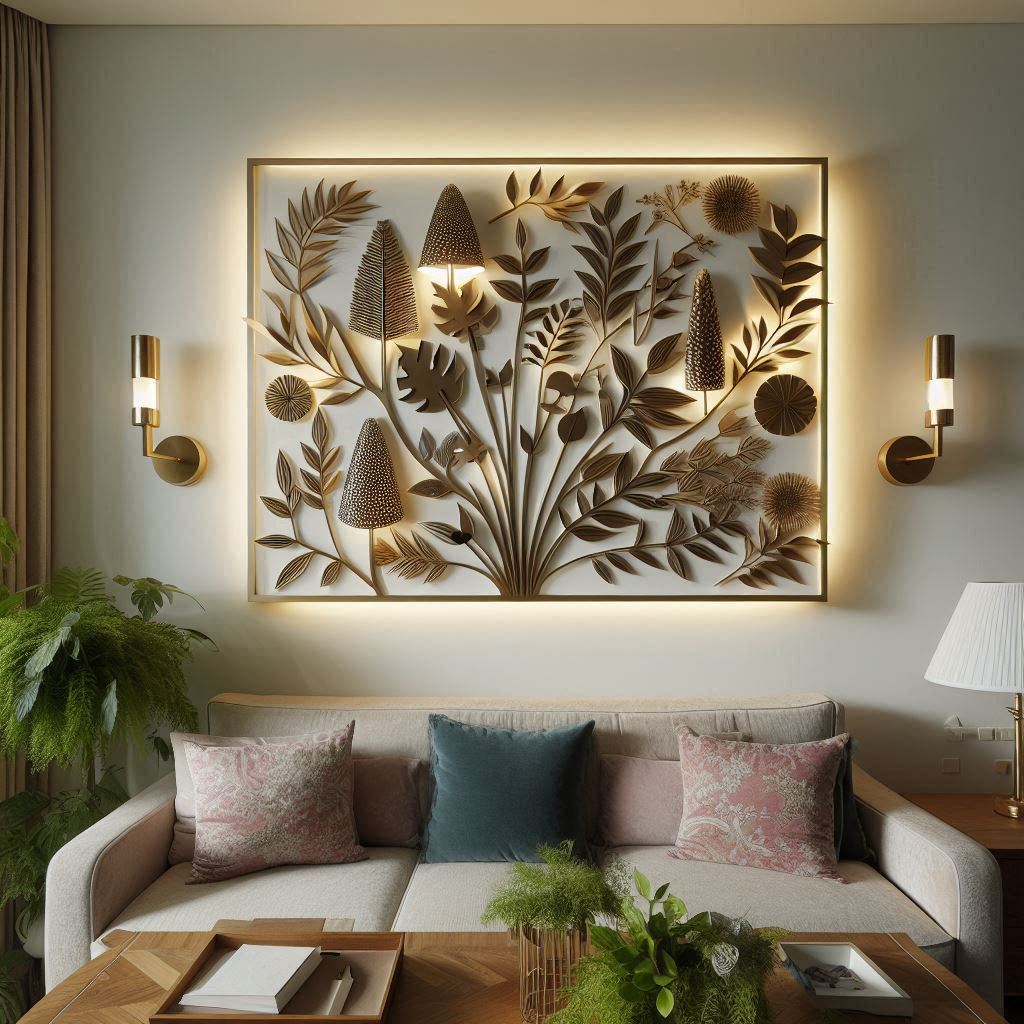Lighting plays a critical role in creating the right ambiance for any space. Among various lighting options, background wall lights have become a popular choice, adding a subtle yet powerful touch of illumination that transforms both residential and commercial interiors. These lights are not just functional; they are also design elements that help enhance the visual appeal of walls, making them stand out. In this blog, we’ll explore the benefits of background wall lights and how to integrate them into your spaces.
What Are Background Wall Lights?
Background wall lights, often referred to as ambient or indirect lighting, are installed to gently illuminate a wall or the surrounding area without casting harsh shadows or creating glaring light. They can come in various forms, such as recessed lights, wall-mounted fixtures, or even LED strips placed behind objects like furniture or artwork. The main idea is to softly light up the wall and provide a subtle glow that enhances the room’s overall ambiance.
Benefits of Background Wall Lights
1. Enhancing Depth and Dimension: Background wall lights create a sense of depth by accentuating the architectural elements of a room. Whether you have textured walls, artwork, or decorative panels, adding background lighting enhances these details, making the room appear more dynamic and visually engaging.
2. Setting the Mood: The lighting in a room directly influences its atmosphere. With background wall lights, you can create a calm and relaxing environment or elevate the elegance of a formal living space. The soft glow these lights emit helps establish the right mood, whether for cozy evenings at home or formal gatherings.
3. Energy Efficiency: Many modern background wall lights are designed to be energy-efficient. LED wall lights, for example, use less electricity and generate less heat compared to traditional light bulbs. This makes them ideal for creating continuous illumination without spiking your energy bills.
4. Highlighting Architectural: Features Background wall lights can be strategically placed to highlight unique architectural features like alcoves, fireplaces, or textured wall finishes. By focusing light on these elements, you can draw attention to the structure and design of your space in a subtle yet impactful way.
5. Improving Visual Comfort: Bright, direct lighting can sometimes cause strain on the eyes, especially when you’re trying to relax. Background wall lights, on the other hand, provide a softer, more diffused light that enhances the room without causing discomfort. They are perfect for rooms where you want to minimize glare, such as bedrooms or living areas.
Different Types of Background Wall Lights
1. Recessed Lights: These lights are installed within the wall or ceiling to create a clean and seamless look. Recessed background wall lights are ideal for modern, minimalist designs where you want the light to appear as though it is coming from the wall itself.
2. LED Strips: LED strips are highly versatile and can be used to create background lighting behind furniture, in coves, or around the perimeter of a room. They come in various colors and brightness levels, allowing you to customize the atmosphere of your space.
3. Wall Sconces: Wall sconces provide a more traditional look, but they can also be used as background lighting if placed strategically. For instance, installing sconces that direct light upwards or downwards can help illuminate a wall without overwhelming the space with brightness.
4. Cove Lighting: Cove lighting is often used in architectural spaces to create indirect lighting that bounces off the ceiling or upper walls. This type of lighting adds depth and sophistication, especially in larger rooms with high ceilings.
Tips for Installing Background Wall Lights
1. Plan Ahead: Consider the placement of your background wall lights during the design phase of your room. This ensures that wiring and positioning are optimal for the best effect.
2. Layer Your Lighting: Background lighting works best when combined with other types of lighting, such as task or accent lighting. Layering different light sources can help create a more balanced and versatile room.
3. Control the Brightness: Use dimmers or smart lighting systems to adjust the brightness of your background wall lights. This allows you to create different moods depending on the time of day or activity.
Conclusion
Background wall lights are more than just an aesthetic feature—they are a functional element that can transform the way a room feels. Whether you want to highlight architectural details, set a relaxing mood, or improve energy efficiency, these lights are a versatile and stylish option. By incorporating background wall lights into your design, you can elevate your space with a soft, ambient glow that enhances both comfort and style.

